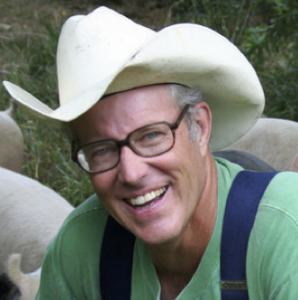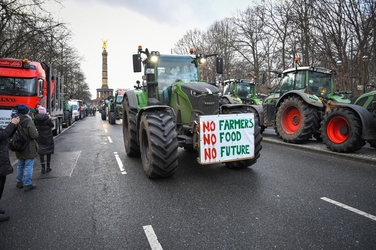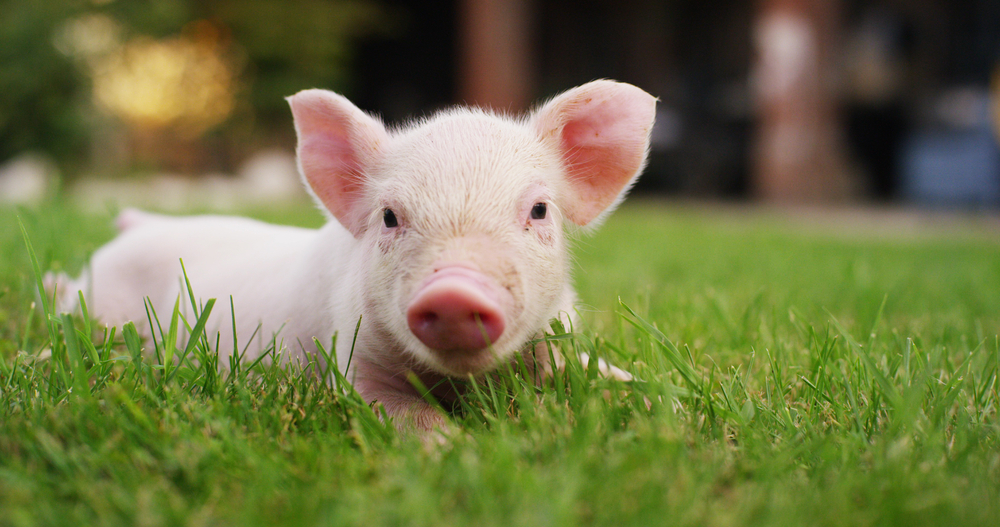A Profound Truth About What It Means to Exercise
Joel Salatin|January 28, 2020

Every now and then someone puts words together in an unusual way.
As a bit of a wordsmith myself, I’m always intrigued by a turn of phrase that conveys a new way to think, packaged in an attractive word chain.
In Norway some time ago, I encountered just such a phrase: nutritious movement.
The fellow who developed the term started an organization called Athletes for Farming with the tagline “Healthy Soil, Healthy Athletes.” It’s not primarily about food; it’s about movement and exercise.
But it’s not just about moving, either.
One of the new themes in the authentic food movement is mindfulness. It’s a little woo-woo and harkens to Eastern mysticism, but perhaps some of us Western-oriented folks could use a little yoga and mindfulness.
And perhaps we could stretch our idea of nutrition to include some things we hadn’t thought of before – like movement.
Moving Beyond Boring Exercise
It reminds me of a talk I heard recently about fun exercise.
Think about the kind of movement kids do. They play – not just games but make-believe.
They’re up and down climbing into imaginary castles, dancing across the room on imaginary ice skates, completely uninhibited and free to express.
Watching children dance at a wedding makes you realize we adults lose a lot of things as we grow up.
(Yes, we gain wisdom and experience and perhaps things and knowledge. But we also lose a lot.)
Would any child jog for exercise, or ride a stationary bicycle? What fun is that?
One of the most beneficial exercises a person can do is physical, intentional work – mindful movement.
Ralph Waldo Emerson said this: “When I go into the garden with a spade, and dig a bed, I feel such an exhilaration and health that I discover that I have been defrauding myself all this time in letting others do for me what I should have done with my own hands.”
It makes me wonder about the wisdom of walkathons. If you want to raise money for doing something, how about raising money for each thistle you chop or multiflora rose you hack out of a farmer’s fencerow? Why not leverage movement as a way to interact with the world around you?
Where are you going on a treadmill? But building and filling a raised garden bed… now, that’s going somewhere.
We routinely talk about empty calories when discussing nutrition. Or we describe lack of nutrition by calling it comfort food or junk food. With today’s understanding of diet and the microbiome, we know far more about the value of choosing food wisely.
The Weston A. Price Foundation preaches nutrient density, as opposed to nutrient deficiency.
So we understand nutrition in terms of food. But do we have a similar way to describe exercise and movement? I suggest we do not. Does our movement make sense nutritionally? If we put our movement program on a nutritional scale to measure its comprehensive benefits, would it measure as culturally, ecologically and economically positive?
Intentional Movement
Think of the money spent fighting weeds… manpower, herbicides, equipment.
What if all the CrossFit and gym membership folks were hooked into an app so that whatever invasive weed or thorny encroachment developed in a community, people would descend with mattocks and shovels and hoes to restore order?
Our farm has never taken government money (which, of course, is taken from taxpayers) to spray thorn bushes and weeds. Instead, we use chain saws, mattocks, hoes, machetes, weed wackers and our own hands to interact with our landscape mindfully, not from the seat of a four-wheeler with a spray wand or from a tractor seat towing 2,4-D (an herbicide).
Our activity not only is physically taxing but also respects the moles, voles and meadowlark nests we encounter along the way.
When we finish these kinds of activities, we often joke, “Well, no need to go to the racquet club today.”
Within the humor of that, however, lies a profound truth: nutritious movement. We’ve exercised meaningfully, actually accomplishing something important with our exertion. It’s not just laps around a track or miles on a rowing machine.
I wonder whether our culture’s new fixation on strenuous games, from mud runs to extreme sports, is really an effort to add fun and meaning to exercise. Because it gets monotonous out there.
But let me tell you, when I look back at a newly cleaned fencerow or a field that’s been exorcised of thornbushes, the satisfaction of accomplishment is hard to measure. Few things fill the human soul like completing meaningful tasks.
Wouldn’t it be cool if we had an app for nutritious movement? If a community had a place to register its needs of the week? Prune the apple tree on Second and Fifth Street. Build a compost bin for the leaves on Fourth Street. Install garden beds at 345, 343 and 342 Elm St. Rake leaves and bring them to the compost bin at 47 Sycamore Ave.
You get the picture. And I haven’t even started on farm needs.
The more I meditate on the simple phrase nutritious movement, the more profound it becomes.
I challenge us all to think about how we can add nutrition to our movement regimens. I think our communities would be better places as a result.
And we might even be healthier, not just in body but in mind and spirit.
That’s better than a gym membership.

Joel Salatin
Joel Salatin calls himself a Christian libertarian environmentalist capitalist lunatic farmer. Others who like him call him the most famous farmer in the world, the high priest of the pasture, and the most eclectic thinker from Virginia since Thomas Jefferson. Those who don’t like him call him a bioterrorist, Typhoid Mary, a charlatan, and a starvation advocate. With a room full of debate trophies from high school and college days, 12 published books, and a thriving multigenerational family farm, he draws on a lifetime of food, farming and fantasy to entertain and inspire audiences around the world.





